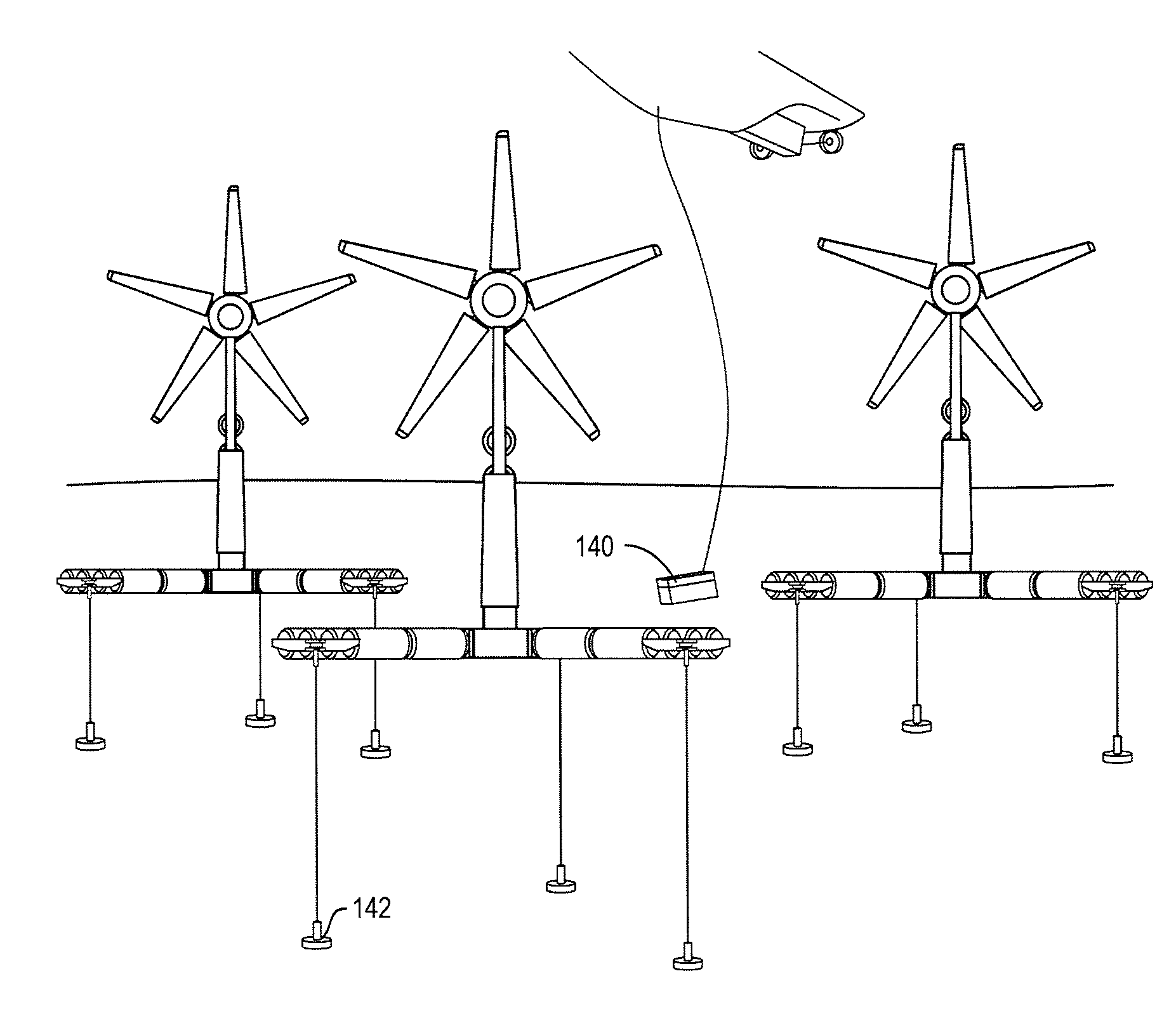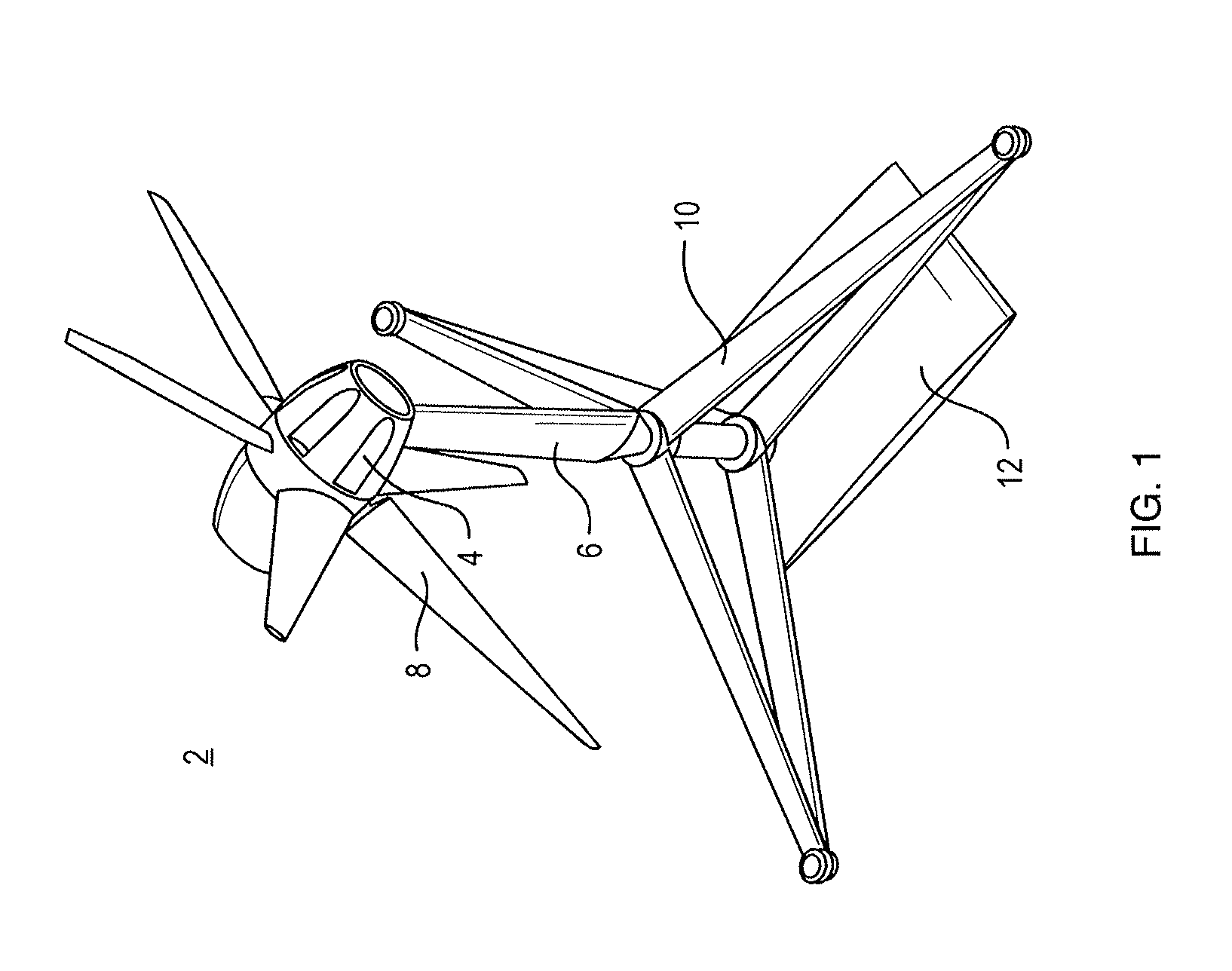Hydrokinetic energy transfer device and method
a technology of hydrokinetic energy and transfer device, which is applied in the direction of electric generator control, vessel construction, marine propulsion, etc., can solve the problems of inefficiency of design that has been tried, not scale well to a larger design, and suffer from one or more major flaws in the various configurations of hydrokinetic energy capture device in the prior art, so as to improve efficiency and reduce the cost. , the effect of reducing the number of problems
- Summary
- Abstract
- Description
- Claims
- Application Information
AI Technical Summary
Benefits of technology
Problems solved by technology
Method used
Image
Examples
Embodiment Construction
[0036]FIG. 1 shows one embodiment of the hydrokinetic device 2 of the present invention which includes a turbine body 4, to which is attached a turbine tower (or mast) 6. Also attached to the turbine body 4 is a set of blades 8, which are up stream of the tower 6 in this embodiment, but can also be downstream. In addition, this embodiment shows a tripod structure 10 and rotating buoyancy chamber 12, wherein the tower 6 rotates within the tripod 10 and rigidly connects the turbine body 4 to the chamber 12, which innovation may be utilized to offset the thrust imparted on the structure by the turbine body 4 via the tower 6. By utilizing the rotating chamber 12 to apply counteracting force, directly opposite of the force from the flow of fluid on the turbine components, less buoyancy overall must be provided and hence lower overall structural material use and cost results, especially in implementations such as supporting offshore floating wind turbines.
[0037]A cut away view of the turb...
PUM
 Login to View More
Login to View More Abstract
Description
Claims
Application Information
 Login to View More
Login to View More - R&D
- Intellectual Property
- Life Sciences
- Materials
- Tech Scout
- Unparalleled Data Quality
- Higher Quality Content
- 60% Fewer Hallucinations
Browse by: Latest US Patents, China's latest patents, Technical Efficacy Thesaurus, Application Domain, Technology Topic, Popular Technical Reports.
© 2025 PatSnap. All rights reserved.Legal|Privacy policy|Modern Slavery Act Transparency Statement|Sitemap|About US| Contact US: help@patsnap.com



